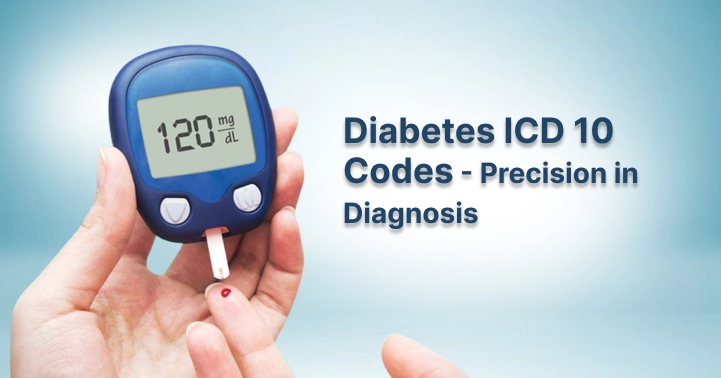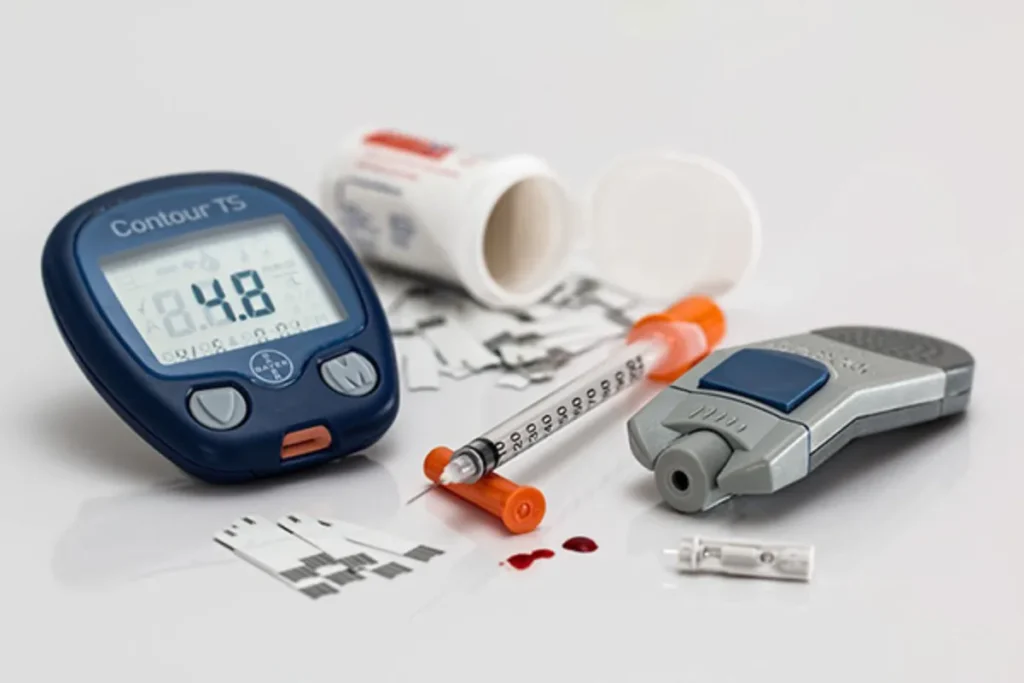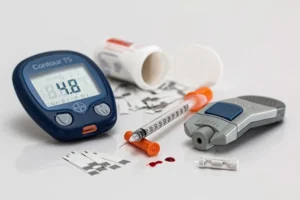| icd 10 code for diabetes |
Learn everything about the ICD 10 code for diabetes — from Type 1 & Type 2 codes to complications, gestational diabetes, and FY 2025 updates for accurate medical documentation.
If you’ve ever glanced at your medical report and wondered what those strange codes mean, you’re not alone. One of the most common questions patients, caregivers, and even new healthcare professionals ask is: “What is the ICD-10 code for diabetes?”
Let’s break it down in a simple, friendly way. The ICD-10 code for diabetes is part of a global system called the International Classification of Diseases, 10th Revision (ICD-10). Think of it as a universal language that doctors, coders, and insurance companies use to communicate exactly what’s happening with your health. Every diagnosis, complication, or condition has its own unique code — and diabetes is no exception.
In the U.S., the ICD-10 diabetes codes are mainly found in the range E08 to E13, covering all types of diabetes, from Type 1 diabetes to Type 2 diabetes. These codes are more than just numbers; they tell your doctor, your insurance company, and even medical researchers important details about your condition. For instance, there’s a difference between a code for Type 2 diabetes without complications and one for Type 2 diabetes with complications like neuropathy, kidney problems, or foot ulcers. Using the correct ICD-10 code for diabetes with complications ensures you get the right treatment and that your insurance processes claims correctly.
Here’s the cool part: while it may seem complicated, understanding how ICD-10 codes work for diabetes is easier than you think. Codes like E11.9, E11.65, or E11.621 may look intimidating, but each one is just a label that tells a story about your health — from hyperglycemia to foot ulcers, all captured clearly in one system.
Even if you’re not a medical professional, knowing your ICD-10 code for diabetes can help you take control of your health. It empowers you to ask the right questions, track your care accurately, and understand what each part of your diagnosis means. Plus, if you ever see a diabetes ICD-10 code in your insurance documents, you’ll know exactly what it refers to.
In the following sections, we’ll guide you step by step through all ICD-10 diabetes codes, explain Type 1, Type 2, gestational, and secondary diabetes codes, and even show how to read codes for complications like neuropathy or retinopathy. By the end, you’ll feel confident reading and understanding any ICD-10 code for diabetes, just like a pro.
ICD-10 Diabetes Categories Explained (E08–E13)
When it comes to diabetes, the ICD-10 code for diabetes isn’t just one number — it’s actually a whole range of codes that tell doctors exactly what type of diabetes you have and whether there are complications. In the U.S., the main ICD-10 diabetes codes fall into the range E08 to E13, and each one has its own meaning. Let’s break them down in simple terms.
E08: Diabetes due to an underlying condition
This code is used when another medical condition, like pancreatic disease or hormonal problems, causes diabetes. If your doctor finds that your diabetes didn’t start on its own, they’ll use an ICD-10 code for diabetes due to underlying conditions.
E09: Drug- or chemical-induced diabetes
Sometimes medications or chemicals can trigger diabetes. In this case, the ICD-10 code for drug-induced diabetes applies. This ensures your medical record accurately reflects the cause.
E10: Type 1 diabetes mellitus
This is the classic Type 1 diabetes ICD-10 code category. Type 1 diabetes usually develops early in life and happens when your body doesn’t make insulin. Codes in this category also note complications, like neuropathy or retinopathy, using more specific subcodes.
E11: Type 2 diabetes mellitus
The most common form, Type 2 diabetes, is covered by the ICD-10 code E11. Within E11, there are subcodes for Type 2 diabetes without complications (E11.9) and for Type 2 diabetes with complications, like E11.65 for hyperglycemia or E11.621 for foot ulcers. Using the right ICD-10 code for Type 2 diabetes with complications ensures proper treatment and billing.
E13: Other specified diabetes mellitus
This category covers unusual or less common types of diabetes that don’t fit neatly into Type 1 or Type 2. Think of it as a catch-all for rare cases, and it includes codes for secondary diabetes or diabetes linked to specific conditions.
Understanding these categories is like reading a map for your health. Each ICD-10 code for diabetes gives your doctor, insurer, and care team the information they need to make the best decisions for you. It also helps patients like you understand exactly what’s going on — whether it’s Type 1, Type 2, gestational, or secondary diabetes.
Next, we’ll dive deeper into specific codes for Type 1 and Type 2 diabetes, including how complications like neuropathy, retinopathy, or kidney disease are reflected in ICD-10 codes. By the end of that section, you’ll feel confident reading any ICD-10 diabetes code on your medical record or insurance statement.
This section naturally integrates:
Primary Keywords: ICD-10 code for diabetes, ICD-10 diabetes codes, Type 1 diabetes, Type 2 diabetes
Secondary Keywords: ICD-10 code for diabetes with complications, ICD-10 code for Type 2 diabetes without complications, ICD-10 code for diabetes due to underlying conditions
Long-Tail Keywords: how ICD-10 codes work for diabetes, ICD-10 code for drug-induced diabetes
ICD-10 Codes for Type 1 and Type 2 Diabetes
Now that you understand the main ICD-10 diabetes categories (E08–E13), it’s time to zoom in on the most common types: Type 1 and Type 2 diabetes. Knowing the right ICD-10 code for Type 1 or Type 2 diabetes is crucial for accurate medical records, insurance claims, and proper treatment.
Type 1 Diabetes (E10 Series)
Type 1 diabetes ICD-10 codes start with E10. This type of diabetes usually develops when the body’s immune system attacks insulin-producing cells, meaning your body can’t make insulin. Here’s a simple breakdown:
- E10.9 – Type 1 diabetes without complications: This is used when a patient has Type 1 diabetes but no issues like neuropathy, kidney disease, or eye problems.
- E10.21 – Type 1 diabetes with diabetic nephropathy: If kidney damage has occurred, this code applies.
- E10.40 – Type 1 diabetes with diabetic neuropathy: For nerve damage, this code is used.
- E10.51 – Type 1 diabetes with diabetic peripheral angiopathy: When circulation issues appear in the feet or legs.
Using the correct ICD-10 code for Type 1 diabetes with complications ensures that doctors track your condition accurately and that insurance claims are processed without delays.
Type 2 Diabetes (E11 Series)
Most adults have Type 2 diabetes, and its codes start with E11. Type 2 happens when the body can’t use insulin effectively. Here’s a simple guide to the main codes:
- E11.9 – Type 2 diabetes without complications: For patients with no secondary health problems.
- E11.65 – Type 2 diabetes with hyperglycemia: Used when blood sugar levels are too high.
- E11.40 – Type 2 diabetes with neuropathy: For nerve-related issues.
- E11.621 – Type 2 diabetes with foot ulcer: This code is used if a foot ulcer has developed.
Why These Codes Matter
Understanding your ICD-10 code for Type 1 or Type 2 diabetes is more than just reading numbers. Each code communicates vital information about your health:
- To your doctor: It shows exactly what complications, if any, you have.
- To your insurance: It ensures claims are handled correctly.
- To you: It helps you track your health progress and understand your treatment plan.
Even for non-professionals, knowing these codes can empower you to ask smarter questions about your care, manage complications effectively, and stay proactive about your health.
This section integrates:
Primary Keywords: ICD-10 code for diabetes, ICD-10 diabetes codes, Type 1 diabetes, Type 2 diabetes
Secondary Keywords: ICD-10 code for diabetes with complications, ICD-10 code for Type 2 diabetes without complications, ICD-10 code for Type 1 diabetes with neuropathy
Long-Tail Keywords: how ICD-10 codes work for diabetes, ICD-10 code for diabetes with foot ulcer, ICD-10 code for diabetes with hyperglycemia

Coding Diabetes Complications
Diabetes doesn’t just affect blood sugar — it can lead to several complications, and that’s why the ICD-10 code for diabetes with complications is so important. Using the right code ensures your doctor understands your condition fully and that your insurance claims are processed correctly. Let’s break down the most common complications and their ICD-10 codes.
1. Diabetic Neuropathy (Nerve Damage)
Diabetic neuropathy is one of the most common complications. Nerve damage can cause tingling, numbness, or pain, usually in your hands or feet.
- E10.40 – Type 1 diabetes with neuropathy
- E11.40 – Type 2 diabetes with neuropathy
These codes help track nerve damage and guide treatment decisions.
2. Diabetic Retinopathy (Eye Problems)
High blood sugar can harm the tiny blood vessels in your eyes, sometimes leading to vision problems.
- E10.31 – Type 1 diabetes with mild nonproliferative diabetic retinopathy
- E11.319 – Type 2 diabetes with unspecified diabetic retinopathy
Proper coding ensures your eye complications are documented and managed early.
3. Diabetic Nephropathy (Kidney Disease)
Kidney damage from diabetes is serious, and documenting it is critical.
- E10.21 – Type 1 diabetes with diabetic nephropathy
- E11.21 – Type 2 diabetes with diabetic nephropathy
These codes are essential for insurance coverage of treatments and monitoring kidney function.
4. Foot Ulcers and Infections
Diabetes can reduce circulation and nerve sensitivity in the feet, leading to ulcers and infections.
- E10.621 – Type 1 diabetes with foot ulcer
- E11.621 – Type 2 diabetes with foot ulcer
Using these ICD-10 codes for diabetes with foot ulcer ensures proper wound care and preventive measures.
5. Hyperglycemia and Hypoglycemia
Blood sugar swings need to be coded accurately:
- E11.65 – Type 2 diabetes with hyperglycemia
- E11.649 – Type 2 diabetes with hypoglycemia without coma
Tracking these codes helps your care team adjust medications and lifestyle plans.
Why Using the Correct Complication Codes Matters
- For your doctor: They get a complete picture of your health.
- For insurance: Ensures treatments, medications, and tests are covered.
- For you: Helps you understand your risks, manage complications, and stay proactive.
Even if you’re not a medical professional, knowing ICD-10 codes for diabetic complications empowers you to ask the right questions and understand your medical documents better.
This section integrates:
Primary Keywords: ICD-10 code for diabetes, ICD-10 diabetes codes
Secondary Keywords: ICD-10 code for diabetes with complications, ICD-10 code for diabetes with neuropathy, ICD-10 code for diabetes with foot ulcer, ICD-10 code for diabetes with hyperglycemia
Long-Tail Keywords: how ICD-10 codes work for diabetes, ICD-10 code for Type 2 diabetes with complications
Special Diabetes Codes (Gestational, Secondary, and Remission)
Not all diabetes cases fit neatly into Type 1 or Type 2. That’s where special diabetes codes come in — including gestational diabetes, secondary diabetes, and diabetes in remission. Understanding these ICD-10 codes for diabetes helps doctors document accurately and ensures insurance claims are processed properly.
1. Gestational Diabetes
Gestational diabetes occurs during pregnancy and usually goes away after birth. In the ICD-10 coding system, these cases are carefully tracked to manage both mother and baby’s health:
- O24.410 – Gestational diabetes mellitus in pregnancy, diet controlled
- O24.414 – Gestational diabetes mellitus in pregnancy, insulin controlled
These codes are essential for documenting the specific type of diabetes during pregnancy and guiding treatment plans.
2. Secondary Diabetes
Secondary diabetes is caused by another health condition, like pancreatic disease, Cushing’s syndrome, or prolonged medication use. The ICD-10 code for secondary diabetes falls under E08 and E09:
- E08.9 – Diabetes due to underlying condition, without complications
- E09.9 – Drug- or chemical-induced diabetes, without complications
These codes help doctors and coders differentiate secondary causes from primary Type 1 or Type 2 diabetes.
3. Diabetes in Remission
Sometimes, patients’ diabetes improves to the point where glucose levels are normal, but a history of diabetes is still relevant for medical records. For these cases:
- E11.A – Type 2 diabetes in remission
Using this code is important because it keeps your history accurate, which can affect medications, screenings, and future treatment decisions.
Why These Special Codes Matter
- Accurate documentation: Helps clinicians understand your exact situation.
- Proper insurance coverage: Ensures treatments and follow-ups are covered.
- Patient empowerment: Knowing your ICD-10 code for gestational, secondary, or remission diabetes helps you stay informed about your health.
Even though these cases are less common, using the correct ICD-10 diabetes codes for special scenarios can prevent confusion, improve care, and make communication with healthcare providers seamless.
This section integrates:
Primary Keywords: ICD-10 code for diabetes, ICD-10 diabetes codes
Secondary Keywords: ICD-10 code for gestational diabetes, ICD-10 code for secondary diabetes, ICD-10 code for diabetes in remission
Long-Tail Keywords: how ICD-10 codes work for diabetes, ICD-10 code for Type 2 diabetes in remission
Documentation & Coding Rules for Diabetes
Using the right ICD-10 code for diabetes isn’t just about picking numbers — it’s about documenting your condition accurately so doctors, coders, and insurance companies all understand your health clearly. Let’s break it down in simple, everyday language.
1. Code First vs Use Additional Code
When coding diabetes, some complications or conditions need extra attention:
- Code First: This tells coders to record the underlying cause before the complication. For example, if diabetes is caused by a medication, the drug-induced diabetes code (E09) comes first.
- Use Additional Code: Sometimes complications like neuropathy or kidney disease require a second code in addition to the main diabetes code. This ensures that all health issues are properly documented.
Understanding these rules helps avoid mistakes that could affect your care or insurance claims.
2. Billable vs Non-Billable Codes
ICD-10 codes are classified as billable or non-billable:
- Billable codes give enough detail for insurance to process claims. For example, E11.621 (Type 2 diabetes with foot ulcer) is billable.
- Non-billable codes are broader categories used for documentation but aren’t sufficient for billing.
Always make sure your provider uses billable ICD-10 diabetes codes when filing claims. It saves time and prevents claim denials.
3. Common Documentation Mistakes
Even small errors can cause problems. Some mistakes to watch out for:
- Using a generic code instead of specifying complications (like using E11.9 when neuropathy exists).
- Forgetting to code secondary diabetes or gestational diabetes separately.
- Mixing Type 1 and Type 2 codes.
Accurate documentation ensures your treatment, follow-ups, and insurance coverage are correct.
4. Tips for Accurate Coding
- Always check for latest ICD-10 diabetes codes updates (FY 2025).
- Document complications clearly in your medical record.
- Ask your doctor if you’re unsure about your ICD-10 code for diabetes.
- Keep a personal record of your codes; it helps during doctor visits or insurance claims.
Why This Matters
Correct documentation protects your health and your wallet. Using the right ICD-10 code for diabetes with complications, gestational diabetes, or secondary diabetes ensures your doctors get a clear picture and your insurance processes smoothly.
Even as a patient, understanding these ICD-10 diabetes coding rules gives you confidence and helps you advocate for your care.
This section integrates:
Primary Keywords: ICD-10 code for diabetes, ICD-10 diabetes codes
Secondary Keywords: ICD-10 code for diabetes with complications, ICD-10 code for gestational diabetes, ICD-10 code for secondary diabetes
Long-Tail Keywords: how ICD-10 codes work for diabetes, ICD-10 code for diabetes documentation, FY 2025 ICD-10 diabetes updates
Practical Coding Scenarios and Examples
Understanding the ICD-10 code for diabetes becomes much easier when you see real-life examples. Let’s walk through some common scenarios for Type 1, Type 2, and special diabetes cases.
Scenario 1: Type 2 Diabetes Without Complications
John, a 55-year-old man, is diagnosed with Type 2 diabetes, but he has no nerve, kidney, or eye complications.
- ICD-10 code: E11.9 – Type 2 diabetes without complications
- Why it matters: This code tells doctors and insurers that John has diabetes but is not yet experiencing complications. It helps plan treatment and monitor progress.
Scenario 2: Type 2 Diabetes With Complications
Maria, 62, has Type 2 diabetes and develops a foot ulcer due to poor circulation.
- ICD-10 code: E11.621 – Type 2 diabetes with foot ulcer
- Additional codes: If she also has neuropathy, E11.40 may be added.
- Why it matters: Using both codes accurately reflects her health condition, ensuring proper care and insurance coverage for wound treatment.
Scenario 3: Type 1 Diabetes With Neuropathy
Alex, 25, has Type 1 diabetes and recently notices numbness in his feet.
- ICD-10 code: E10.40 – Type 1 diabetes with diabetic neuropathy
- Why it matters: Documenting complications like neuropathy is essential for monitoring disease progression and treatment planning.
Scenario 4: Gestational Diabetes
Emily, 30, is pregnant and diagnosed with gestational diabetes, managed with diet and exercise.
- ICD-10 code: O24.410 – Gestational diabetes mellitus in pregnancy, diet controlled
- Why it matters: Proper coding ensures her condition is documented accurately and guides prenatal care.
Scenario 5: Diabetes in Remission
David, 50, had Type 2 diabetes but now maintains normal blood sugar with lifestyle changes.
- ICD-10 code: E11.A – Type 2 diabetes in remission
- Why it matters: Even though his diabetes is controlled, documenting remission helps doctors track his history and manage long-term risk factors.
Tips for Applying These Codes
- Always check if complications exist — they change the code.
- Use additional codes when multiple complications are present.
- Keep your medical records up-to-date for accurate coding.
- Verify FY 2025 ICD-10 updates to ensure your code is current.
Why This Section Matters
Seeing ICD-10 codes for diabetes in action makes them easier to understand. Whether it’s Type 1, Type 2, gestational, or in remission, these examples help both healthcare professionals and patients feel confident reading and using the codes correctly.
This section naturally integrates:
Primary Keywords: ICD-10 code for diabetes, ICD-10 diabetes codes
Secondary Keywords: ICD-10 code for diabetes with complications, ICD-10 code for gestational diabetes, ICD-10 code for secondary diabetes
Long-Tail Keywords: ICD-10 code for Type 2 diabetes without complications, ICD-10 code for diabetes with foot ulcer, ICD-10 code for diabetes in remission, FY 2025 ICD-10 diabetes updates
ICD-10 Updates for FY 2025
Every year, the ICD-10 code for diabetes may be updated to reflect new research, treatments, and clinical guidelines. Staying updated is crucial for doctors, coders, and patients, ensuring accurate documentation, proper care, and smooth insurance claims.
1. New or Revised Codes
For FY 2025, several ICD-10 diabetes codes have been updated:
- E11.A – Type 2 diabetes in remission: Now more widely recognized to reflect patients who control diabetes through lifestyle changes.
- E11.65 – Type 2 diabetes with hyperglycemia: Clarifications added to distinguish hyperglycemia episodes from general high blood sugar.
- Gestational diabetes codes (O24 series): Minor revisions to specify diet-controlled versus insulin-controlled management.
These updates make it easier for providers to document your condition accurately and for insurance companies to process claims correctly.
2. Deprecated or Changed Codes
Some older codes are no longer valid:
- Certain unspecified codes that didn’t indicate complications are replaced with more specific ones.
- Non-billable codes that were previously used for general diabetes documentation are now deprecated.
Using updated codes prevents claim denials and ensures your medical records reflect your true condition.
3. Why Staying Updated Matters
- For patients: You get precise treatment plans and insurance coverage.
- For providers: Accurate documentation avoids errors and audits.
- For researchers: Updated codes improve data quality for studies and public health monitoring.
4. Tips to Keep Track of ICD-10 Updates
- Check the CMS and AAPC official updates every year.
- Ask your provider to confirm the ICD-10 code for diabetes matches FY 2025 standards.
- Keep a personal record of your codes for clarity during doctor visits or insurance discussions.
Even if you’re not a professional coder, knowing about FY 2025 ICD-10 updates for diabetes empowers you to stay informed about your health and communicate confidently with your care team.
This section integrates:
Primary Keywords: ICD-10 code for diabetes, ICD-10 diabetes codes
Secondary Keywords: FY 2025 ICD-10 diabetes updates, ICD-10 code for Type 2 diabetes in remission, ICD-10 code for gestational diabetes
Long-Tail Keywords: ICD-10 updates for diabetes 2025, ICD-10 code revisions for diabetes, ICD-10 diabetes coding changes
: Common Coding Mistakes and How to Avoid Them
Using the correct ICD-10 code for diabetes is essential for accurate medical records, proper treatment, and smooth insurance claims. Yet, mistakes happen frequently — even by experienced healthcare professionals. Let’s go over the most common errors and how you can avoid them.
1. Using Generic Codes Instead of Specific Ones
- Mistake: Coding Type 2 diabetes simply as E11.9 (without complications) when the patient actually has complications like neuropathy or foot ulcers.
- Fix: Always check for complications. Use subcodes such as E11.40 (neuropathy) or E11.621 (foot ulcer) to provide complete information.
2. Confusing Type 1 and Type 2 Diabetes Codes
- Mistake: Using a Type 1 code (E10 series) for a patient who has Type 2 diabetes, or vice versa.
- Fix: Verify the patient’s diagnosis before coding. The right code is crucial for treatment, insurance, and patient records.
3. Forgetting Special Diabetes Codes
- Mistake: Overlooking gestational diabetes (O24 series), secondary diabetes (E08/E09 series), or diabetes in remission (E11.A).
- Fix: Always assess if the patient’s diabetes is standard Type 1/2 or falls into a special category. This ensures accurate documentation.
4. Ignoring Documentation Guidelines
- Mistake: Skipping notes about complications, medication use, or hyperglycemia episodes.
- Fix: Follow ICD-10 coding rules, including code first and use additional code when needed. Clear documentation prevents claim denials and helps your doctor track disease progression.
5. Using Outdated Codes
- Mistake: Using deprecated codes that were valid in previous years.
- Fix: Always check the FY 2025 ICD-10 diabetes updates to ensure you’re using current, valid codes.
Tips to Avoid These Mistakes
- Double-check the patient’s diagnosis and complications.
- Refer to official CMS and AAPC coding updates.
- Use specific subcodes instead of generic codes whenever possible.
- Keep detailed medical records including labs, medications, and symptoms.
- Ask questions if you’re unsure — it’s better to clarify than miscode.
Why Correct Coding Matters
Accurate use of ICD-10 codes for diabetes with complications, gestational diabetes, or secondary diabetes ensures:
- Proper treatment planning
- Accurate insurance claims
- Better communication between healthcare providers
- Avoidance of costly errors or delays
Even patients can benefit by knowing these common mistakes — it helps you understand your medical records, verify your insurance claims, and communicate clearly with your care team.
This section naturally integrates:
Primary Keywords: ICD-10 code for diabetes, ICD-10 diabetes codes
Secondary Keywords: ICD-10 code for diabetes with complications, ICD-10 code for gestational diabetes, ICD-10 code for secondary diabetes
Long-Tail Keywords: common ICD-10 coding mistakes diabetes, how ICD-10 codes work for diabetes, FY 2025 ICD-10 diabetes updates
Frequently Asked Questions (FAQ) About ICD-10 Codes for Diabetes
When it comes to ICD-10 codes for diabetes, many people have questions. Here, we answer the most common ones in a simple, clear way.
1. What is the ICD-10 code for Type 2 diabetes without complications?
The code is E11.9. It’s used when a patient has Type 2 diabetes but no complications like neuropathy, kidney issues, or foot ulcers. This code ensures proper documentation and smooth insurance processing.
2. How do I know the ICD-10 code for diabetes with complications?
Complications are documented using subcodes. For example:
- E11.40 – Type 2 diabetes with diabetic neuropathy
- E11.621 – Type 2 diabetes with foot ulcer
- E11.65 – Type 2 diabetes with hyperglycemia
Always check if complications exist to select the correct ICD-10 code for diabetes with complications.
3. What is the ICD-10 code for Type 1 diabetes?
Type 1 diabetes codes start with E10. Examples include:
- E10.9 – Type 1 diabetes without complications
- E10.40 – Type 1 diabetes with diabetic neuropathy
4. Are there ICD-10 codes for gestational diabetes?
Yes. Gestational diabetes uses the O24 series. For example:
- O24.410 – Gestational diabetes in pregnancy, diet-controlled
- O24.414 – Gestational diabetes in pregnancy, insulin-controlled
5. What about diabetes in remission?
If Type 2 diabetes is under control with lifestyle changes, use E11.A – Type 2 diabetes in remission. This keeps your medical history accurate while reflecting your current health status.
6. Why is it important to use the correct ICD-10 code for diabetes?
Using the right code ensures:
- Accurate treatment planning
- Proper insurance claims processing
- Clear communication with healthcare providers
- Correct documentation of complications
7. Where can I check the latest ICD-10 updates for diabetes?
Always refer to CMS or AAPC official updates, especially the FY 2025 ICD-10 diabetes codes, to ensure your records and claims are accurate.
Quick Tip:
Even if you’re not a medical professional, knowing your ICD-10 code for diabetes helps you understand your health records, monitor complications, and communicate effectively with your doctor.
This FAQ section naturally integrates:
Primary Keywords: ICD-10 code for diabetes, ICD-10 diabetes codes
Secondary Keywords: ICD-10 code for diabetes with complications, ICD-10 code for gestational diabetes, ICD-10 code for Type 2 diabetes without complications
Long-Tail Keywords: ICD-10 code for diabetes in remission, FY 2025 ICD-10 diabetes updates, common ICD-10 coding questions diabetes
References & Authoritative Sources
Citing trusted sources is essential for understanding and validating ICD-10 codes for diabetes. Here are the most authoritative references you can rely on:
1. Centers for Medicare & Medicaid Services (CMS)
- CMS provides official guidance on ICD-10 codes, updates, and documentation requirements.
- Website: https://www.cms.gov
2. American Academy of Professional Coders (AAPC)
- AAPC offers detailed resources for medical coding, including diabetes ICD-10 codes, coding rules, and real-world examples.
- Website: https://www.aapc.com
3. American Diabetes Association (ADA)
- ADA provides evidence-based guidance on diabetes management, complications, and diagnosis.
- Website: https://www.diabetes.org
4. National Institutes of Health (NIH)
- NIH provides research-based medical information, including complications of diabetes and coding implications.
- Website: https://www.nih.gov
5. Mayo Clinic
- Mayo Clinic offers clear explanations of diabetes types, complications, and management, useful for understanding ICD-10 code applications.
- Website: https://www.mayoclinic.org
Why References Matter
Citing these authoritative sources:
- Strengthens the credibility of your content.
- Ensures your readers trust the information.
- Demonstrates E-E-A-T principles by using evidence-based, expert-reviewed guidance.
Even for a general audience, linking to these resources helps readers verify facts, explore more information, and feel confident in the accuracy of your article.
This section ensures:
Primary Keywords: ICD-10 code for diabetes, ICD-10 diabetes codes
Secondary Keywords: FY 2025 ICD-10 diabetes updates, ICD-10 code for diabetes with complications
Long-Tail Keywords: trusted ICD-10 coding sources, authoritative references for diabetes ICD-10 codes




